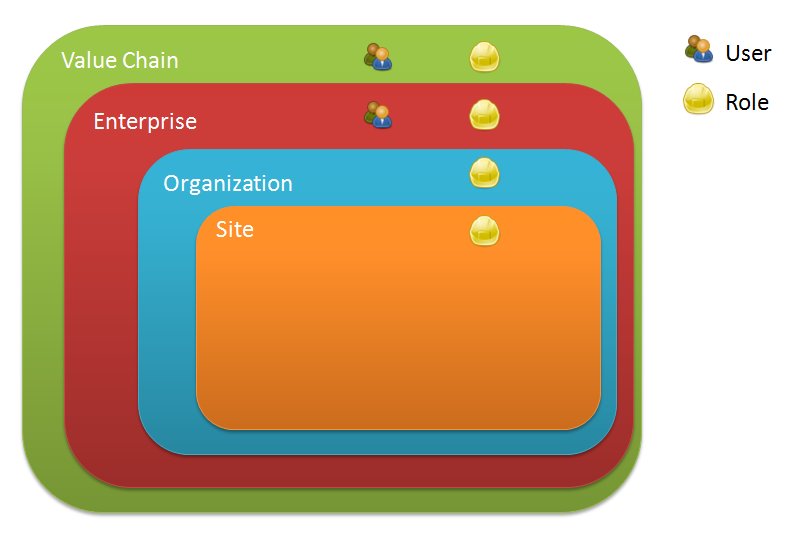Package com.onenetwork.platform.common.usercontext
Objects to represent and manipulate user credentials and preferences.
Permissibility plays a large role in the One Network Platform - numerous APIs require one to provide a
 Users can be defined beneath a ValueChain, or beneath an Enterprise. A ValueChain user is typically a high-level
administrator for a Platform instance whose responsibilities cut across all Enterprises. Enterprise users are more common;
these users belong to a company and are administered within that company.
Roles can be defined beneath a ValueChain, an Enterprise, an Organization or a Site. The level at which the Role
is defined can be used by APIs to restrict access to information and operations. Each User plays only one Role at a time,
but can have multiple Roles to choose from. (This association is done through the
Users can be defined beneath a ValueChain, or beneath an Enterprise. A ValueChain user is typically a high-level
administrator for a Platform instance whose responsibilities cut across all Enterprises. Enterprise users are more common;
these users belong to a company and are administered within that company.
Roles can be defined beneath a ValueChain, an Enterprise, an Organization or a Site. The level at which the Role
is defined can be used by APIs to restrict access to information and operations. Each User plays only one Role at a time,
but can have multiple Roles to choose from. (This association is done through the
PlatformUserContext so they can restrict operations and/or filter data appropriately.
Users and Roles can be defined at different levels:
 Users can be defined beneath a ValueChain, or beneath an Enterprise. A ValueChain user is typically a high-level
administrator for a Platform instance whose responsibilities cut across all Enterprises. Enterprise users are more common;
these users belong to a company and are administered within that company.
Roles can be defined beneath a ValueChain, an Enterprise, an Organization or a Site. The level at which the Role
is defined can be used by APIs to restrict access to information and operations. Each User plays only one Role at a time,
but can have multiple Roles to choose from. (This association is done through the
Users can be defined beneath a ValueChain, or beneath an Enterprise. A ValueChain user is typically a high-level
administrator for a Platform instance whose responsibilities cut across all Enterprises. Enterprise users are more common;
these users belong to a company and are administered within that company.
Roles can be defined beneath a ValueChain, an Enterprise, an Organization or a Site. The level at which the Role
is defined can be used by APIs to restrict access to information and operations. Each User plays only one Role at a time,
but can have multiple Roles to choose from. (This association is done through the UserAssociation
model.
The context information about the current user and the role they are currently playing is available through
PlatformUserContext, which can be acquired
via UserContextService.
PlatformUserProfile contains additional information for a user,
including preferences set through the user interface such as Locale, preferred number and date formats, etc.-
Interface Summary Interface Description FormatValues FormatValues is used for encapsulating date-time formatting data, such as the AM/PM symbols used for date-time formatting.PlatformUserContext PlatformUserContext describes an end-user, and includes both their user information and their current role.PlatformUserProfile PlatformUserProfile represents the entirety of what is stored in anHttpSessionfor a given user.UserContextService Service for acquiring and manipulatingPlatformUserContextandPlatformUserProfileobjects.